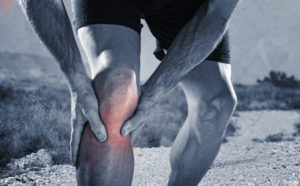Adult Stem Cell Therapy & Platelet Rich Plasma
Osteoarthritis: What It Really Is and Available Treatments
 It’s estimated that osteoarthritis impacts 27 million people in the United States. This widespread condition can impact mobility and can cause varying levels of pain. The risk for osteoarthritis increases with age, given that it results from overuse.
It’s estimated that osteoarthritis impacts 27 million people in the United States. This widespread condition can impact mobility and can cause varying levels of pain. The risk for osteoarthritis increases with age, given that it results from overuse.
Here, we’ll cover the basics of osteoarthritis and outline the available treatment options. With a thoughtful treatment strategy, osteoarthritis pain can be managed effectively to improve day-to-day comfort.
What Is Osteoarthritis?
Osteoarthritis may also be referred to as “wear and tear” arthritis. This condition involves the deterioration of articular cartilage, which covers the ends of our bones. Articular cartilage helps our joints glide comfortably and with minimal friction. So when it wears away, the underlying bone, called subchondral bone, experiences changes. This can mean that some areas of the bone harden, while others soften. Bone spurs may also occur as the body attempts to increase the surface area around the joint to reduce friction.
All of the joints in your body are susceptible to osteoarthritis. This condition ranges in severity, so symptoms may be mild and manageable or intense and debilitating. Osteoarthritis causes increased inflammation in the affected area, which can lead to prolonged pain, stiffness, and discomfort when the joint moves. That being said, pain from osteoarthritis typically stems from the deterioration of cartilage inside the joint, which causes inflammation and eventual pain.
What Happens When Osteoarthritis Progresses?
With the progression of osteoarthritis, range of movement may become limited as pain levels increase. Inflammation from osteoarthritis reaches the tendons surrounding the joint, as well as the synovium, which is the soft tissue that supports synovial fluid production. The synovium surrounds the diarthrodial joints, bursae, and tendon sheaths. Synovial fluid promotes healthy bones and cartilage and provides lubrication to reduce friction in these areas. So when the synovium becomes inflamed with osteoarthritis, the synovial fluid is less effective in caring for your bones and cartilage.
What Treatments for Osteoarthritis Are Available?
Many treatments are available for osteoarthritis, with both nonsurgical and surgical options open to patients. The following listed treatments are among the most effective, currently available options:
- Nonsurgical Treatments
- Physical Therapy
Physical therapy can be a highly effective treatment option to:
-
-
- Increase range of motion and joint flexibility
- Support bone, muscle, and cartilage by strengthening tissues
- Reduce pain
-
Physical therapy to treat osteoarthritis may involve assistive devices like a brace, cane, crutch, or splint, as well as heat and cold therapy.
-
- Medications
Anti-inflammatory medications can reduce osteoarthritis pain. Corticosteroids are commonly prescribed for osteoarthritis and may temporarily reduce pain and swelling. Additionally, supplements like glucosamine and chondroitin can help minimize osteoarthritic pain.
- Surgical Treatments
- Arthroscopy
Arthroscopy isn’t the most permanent surgical treatment for osteoarthritis, but it may help lower pain from arthritis-related injuries. Arthroscopy may also help open space in the joint capsule to improve range of motion.
-
- Joint Replacement
In joint replacement, a surgeon may replace part or all of the joint affected by osteoarthritis with an artificial joint. The replacement joint may be constructed from metal or plastic. Minimally invasive joint replacements are a modern surgical procedure and can significantly reduce patient downtime following the procedure.
-
- PRP and Stem Cells
PRP (plasma rich platelets) and stems cells are two non-surgical treatment options that may be used individually or in conjunction with each other. These developments in osteoarthritic treatment work to bolster cell regeneration, enabling the body to heal in a natural way.
Conclusion
Osteoarthritis is a common medical concern, especially among older adults, that results from wear and tear. Osteoarthritis can cause a limited range of motion, accompanied by aches, pains, and stiffness in the affected joint. At Bennett Orthopedics, Dr. Bennett will develop an advanced, individual treatment plan for patients suffering from osteoarthritis. Using a combination of modern treatment methods, you can successfully manage osteoarthritis and return to the activities you enjoy with less pain.
Sources
https://www.verywellhealth.com/what-is-synovium-188024
https://www.webmd.com/osteoarthritis/guide/osteoarthritis-basics#1






